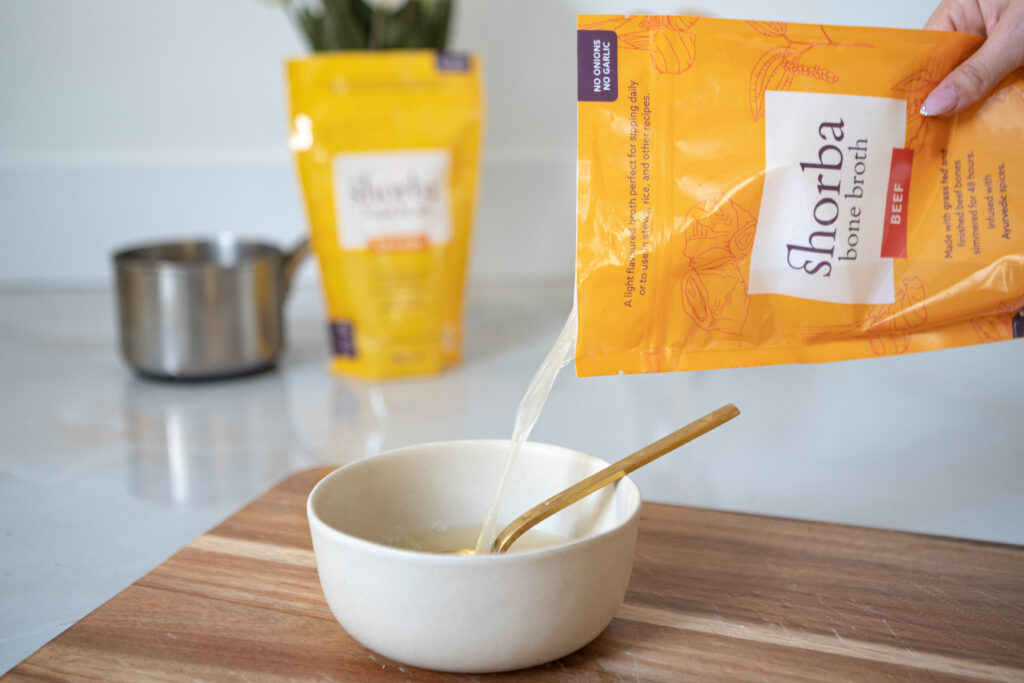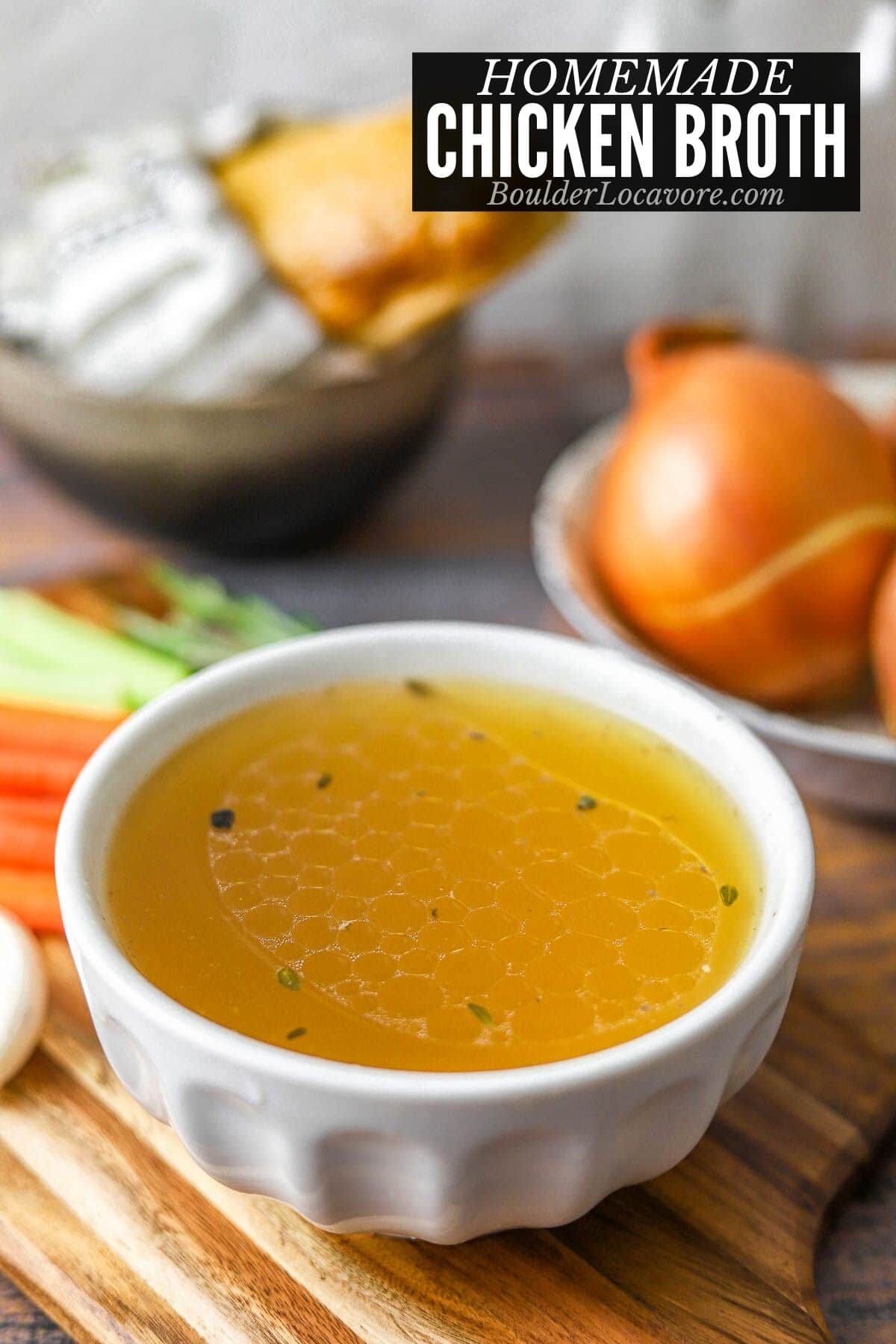The Ultimate Overview to Appreciating and making Organic Bone Broths at Home
Bone brew has actually gained focus for its countless wellness benefits and culinary convenience. Crafting organic bone brew in the house allows individuals to control the quality of ingredients, guaranteeing a nourishing end result. Comprehending the choice of bones, necessary flavoring components, and proper cooking methods is crucial. As the procedure unravels, one may ask yourself how to raise their brew beyond the fundamentals and include it into daily meals for improved flavor and nutrition.
Understanding the Wellness Conveniences of Bone Brew
Although bone brew has been a staple in various cuisines for centuries, its health advantages have obtained considerable attention in the last few years. Rich in collagen, amino acids, and minerals, bone broth is often touted for its possible to support joint wellness, improve digestive tract function, and boost skin flexibility. The jelly obtained from prepared bones may assist food digestion and assistance seal the gut lining, possibly relieving issues like leaky digestive tract syndrome.Furthermore, the existence of nutrients such as glucosamine and chondroitin might add to minimized swelling and pain relief in joints. Additionally, bone brew is moisturizing and can offer as a nutritious base for stews and soups. Lots of advocates likewise declare that it increases the body immune system, thanks to its mineral account. Generally, the revival of interest in bone broth is linked to its regarded capacity to advertise overall wellness and assistance numerous bodily features.
Choosing the Right Bones for Maximum Flavor and Nutrition
What elements should one take into consideration when choosing bones for broth prep work? The sort of bones made use of significantly impacts both taste and nutritional worth. First, it is vital to select bones that consist of a mix of marrow bones, joint bones, and meaty bones. Marrow bones supply healthy and balanced fats and rich tastes, while joint bones add collagen, enhancing the brew's dietary profile.Additionally, sourcing bones from grass-fed or pasture-raised animals guarantees higher high quality and more nutrients, as these animals are typically healthier. The quality of the bones is likewise vital; picking bones from local butchers or farmers' markets can guarantee excellent taste. Bone size matters as well; larger bones release more jelly, resulting in a richer brew. Considering the kind of animal-- hen, fish, or beef-- can influence the last preference, allowing for flexible brew options customized to private preferences.
Necessary Active Ingredients for a Flavorful Bone Broth

Quality Bone Selection
The foundation of a savory bone broth depends on the mindful selection of top notch bones. Sourcing organic, grass-fed or pasture-raised bones is necessary, as these choices are most likely to be without hazardous additives and supply exceptional nutrients. Selections such as beef, lamb, or chicken bones each impart distinct tastes and wellness benefits. Bone kinds, consisting of marrow bones, knuckle bones, and oxtails, contribute jelly and collagen, improving the brew's structure. Choosing bones with a mix of meat and connective cells can additionally include splendor and depth. Additionally, choosing bones with noticeable marrow ensures a nutrient-dense brew, raising the general top quality. Eventually, spending time in high quality bone selection lays the foundation for a beneficial and scrumptious broth.
Fragrant Flavor Boosters
Choosing high-grade bones sets the stage for a rich and healthy bone broth, however it is the enhancement of fragrant taste enhancers that truly raises the meal. Ingredients such as onions, garlic, and carrots not only present sweetness yet also contribute deepness to the brew. Fresh natural herbs like parsley, bay, and thyme leaves add an aromatic note, while seasonings such as black peppercorns and cloves present warmth and complexity. Additionally, including a dash of apple cider vinegar can aid extract minerals from the bones, enriching the broth. These flavor boosters create a harmonious mix, transforming a simple broth right into a tasty structure for stews, soups, or sauces, making it a versatile part in any cooking repertoire.
Step-by-Step Guide to Making Bone Broth in your home
Creating bone brew in your home can be a gratifying culinary venture that enhances both taste and nutrition in numerous meals. To start, one should pick top quality bones, ideally from organic or grass-fed sources. Toasting the bones at 400 ° F for concerning half an hour can increase the flavor. Next, transfer the roasted bones to a large pot or sluggish cooker and cover them with cold water. Including a splash of vinegar aids remove minerals from the bones.Include fragrant vegetables like onions, carrots, and celery for added deepness, in addition to herbs and spices as desired. Bring the mixture to a boil, after that lower to a simmer. It is vital to let the broth simmer for a minimum of 12 hours, though longer is better for maximum richness. Lastly, stress the broth through a fine-mesh sieve and shop it in closed containers, prepared to elevate dishes with its nutritious significance.

Tips for Improving Your Bone Broth Simmer
While simmering bone broth, maintaining the appropriate temperature and timing is crucial for achieving a rich and flavorful outcome. A mild simmer, preferably in between 190 ° F and 210 ° F, helps remove optimum nutrients and flavors without steaming, which can make the broth cloudy. It is suggested to keep an eye on the pot closely, changing the heat as needed to keep this simmer.Timing is also important; a longer simmer, typically varying from 12 to 48 hours, permits for deeper flavor removal and collagen release. Full Article For poultry bones, a 12 to 24-hour simmer suffices, while beef bones gain from longer food preparation times.Additionally, skimming any foam or contaminations that rise to the surface during the initial few hours can improve the broth's clearness and preference. Finally, ensuring the pot is covered throughout simmering helps to maintain moisture and intensify the tastes, producing an extra rewarding final result.
Innovative Ways to Make Use Of Bone Broth in Your Cooking
Integrating bone brew into different recipes elevates both taste and dietary worth. Cooks and home chefs alike locate that using bone broth as a base for soups and stews improves depth and richness, changing simple recipes right into hearty meals. It can also be employed in risottos, where the broth replaces water, enabling the grains to absorb its mouthwatering essence.Additionally, bone brew works as a superb food preparation liquid for grains like quinoa or rice, infusing them with nutrients and flavor. For an added twist, it can be made use of in braising meats, causing tender, flavorful outcomes. Also sauces take advantage of a sprinkle of bone brew, enriching their taste profile.Moreover, bone brew can be included into shakes for an unexpected health and wellness boost, supplying protein and nutrients without endangering taste. These imaginative applications showcase the flexibility of bone brew in everyday food preparation, making it an important kitchen area staple.
Saving and Maintaining Your Home Made Bone Broth
Correct storage space and conservation of homemade bone brew is essential for keeping its taste and dietary advantages. Cold methods and refrigeration finest methods play an essential role in extending the brew's life span. Understanding these approaches can aid ensure that the brew stays risk-free and scrumptious for future use.

Icing Up Strategies Described
Freezing techniques are essential for successfully saving and protecting self-made bone broth, ensuring its rich tastes and nutrients stay undamaged for future use. To ice up bone broth, it is suggested to allow it awesome entirely prior to moving it to storage space containers. Glass jars, silicone molds, or durable freezer bags appropriate choices. When using containers, leave area on top for development throughout cold. Portioning the broth into smaller sized quantities allows for very easy thawing and minimizes waste. Tag containers with the day and components for very easy recognition. For peak quality, eat the frozen brew within three to 6 months - Chicken Broth. Defrosting can be performed in the fridge or by utilizing a microwave, ensuring that the brew is warmed completely prior to usage
Refrigeration Best Practices
While many emphasis on cold as a method of conservation, refrigeration also plays an essential function in keeping homemade bone broth successfully. When cooled down, bone broth must be transferred to airtight containers, guaranteeing minimal air exposure to stop perishing. It is recommended to refrigerate broth within two hours of food preparation to preserve its quality. Usually, homemade bone broth can be stored in the fridge for approximately 5 days. Labeling containers with dates can assist track quality. For peak taste and safety, broth must be reheated to a rolling boil before usage. If longer storage is required, cold continues to be an exceptional choice, however proper refrigeration techniques ensure that bone brew stays nutritious and tasty for temporary use.
Frequently Asked Inquiries
Can I Use Frozen Bones for Making Bone Broth?
The concern of link making use of icy bones for bone broth emerges often (Benefits Of Bone Broth). Experts concur that icy bones can be utilized properly, yet they need to be thawed prior to cooking to assure perfect flavor and nutrient extraction
How Much Time Can I Store Homemade Bone Brew?

Is It Safe to Reheat Bone Broth Multiple Times?
Reheating bone brew several times can position safety concerns - Organic Bone Broths. Each reheating cycle raises the risk of microbial growth. It is advisable to reheat just once and save any leftovers quickly to guarantee safety and high quality
Can I Add Vegetables to the Brew for Flavor?
Adding vegetables to broth boosts taste and nutritional worth. Common choices consist of carrots, onions, and celery. The veggies instill their essence right into the brew, developing a richer and much more full-flavored end product.
What's the Finest Way to Defrost Icy Bone Brew?
To defrost icy bone broth, one can position it in the fridge over night, use a microwave on reduced warm, or immerse the secured container in cozy water, making sure even defrosting without compromising flavor or nutrients. It is essential to choose bones that include a mix of marrow bones, joint bones, and weighty bones. Marrow bones provide abundant tastes and healthy and balanced fats, while joint bones add collagen, enhancing the brew's nutritional profile.Additionally, sourcing bones from pasture-raised or grass-fed animals guarantees greater quality and more nutrients, as these pets are commonly healthier. Bone types, including marrow bones, knuckle bones, and oxtails, add gelatin and collagen, improving the brew's texture. Choosing high-quality bones establishes the phase for a nourishing and rich bone brew, yet it is the addition of aromatic taste boosters that really boosts the dish. Also sauces profit from a dash of bone brew, enhancing their preference profile.Moreover, bone broth can be integrated into smoothie mixes for an unforeseen wellness boost, giving protein and nutrients without jeopardizing taste.